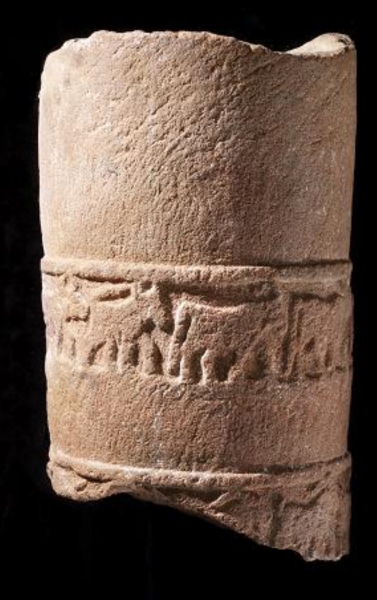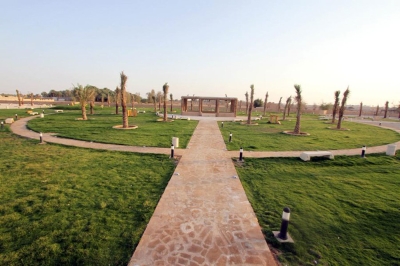
The Sandstone Censer is a carved pinkish sandstone censer. It was found in Mount Umm al-Daraj, in AlUla Governorate, in al-Madinah al-Munawwarah Province. It has a cylindrical body topped by a square basin. Two of its four sides protrude from the column. The lower part of the crown features triangles with their vertices facing upwards and featuring consecutive hollow carvings. The column is divided into four bands, the first band is located directly under the basin and features no ornamentation. It is followed by the second band which is carved at its center and corners. A third band without any ornamentation precedes a fourth one featuring hollow carvings. The carving features a cow carved at the center and along the band, over a band without any ornamentation. At the base, the remains of the censer are found.
History of the censer
The sandstone censer dates back to the half of the first millennium BCE, specifically during the era of the Lihyanite Kingdom, where it was used to burn incense.
The Museum of the Archaeology Department of King Saud University in Riyadh houses the sandstone censer. It was selected from a diverse collection of archaeological findings recovered from the Kingdom of Saudi Arabia and displayed at the Saudi Archeological Masterpieces Through the Ages Exhibition, held at the Louvre Museum in the French capital, Paris, in 2010. The discovery of the sandstone censer is one of the results of the archaeological survey and excavation efforts carried out by the antiquities and museums sectors in Saudi Arabia over the years. It was found as part of the discoveries made by Saudi archaeologists and scientific missions.
Significance of the censer
The sandstone censer sheds light on the history of the inhabitants of the Arabian Peninsula in developing various types of censers, including small censers that are often circular or square-shaped, and large censers. The uncovered censer is one of the most distinguished censers in terms of its design which combines several architectural forms. In this respect, the artists who carved the censer opted for a square form to design the censer basin, while he conceived its base in the form of a cylindrical form and ornamented the column with sacrificial figures. Large censers were mostly used to burn large quantities of incense on important occasions.
AlUla Governorate, where the censer was unearthed, is one of the most important cultural and civilizational heritage sites of Saudi Arabia. The governorate also houses Hegra (Mada'in Salih), the first site in Saudi Arabia to be inscribed on the UNESCO World Heritage List in 2008.
Related quizzes
Related articles

